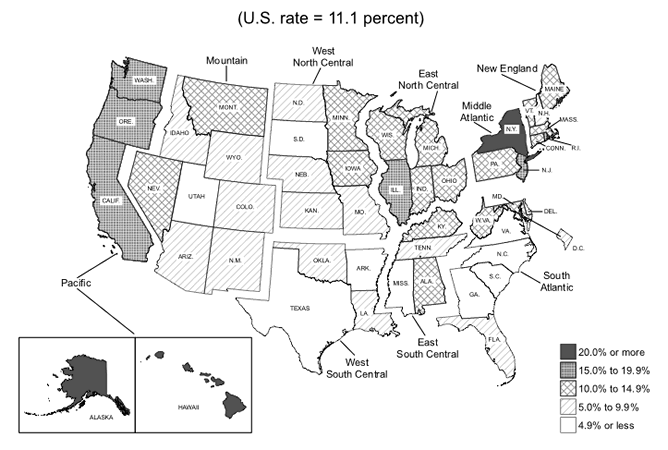

Share
Union density was 11.1 percent in 2014, the Bureau of Labor Statistics reported, down 0.2 percent from the year before. Unions added 48,000 members last year, but the workforce grew even more.
Minnesota had 362,000 union members in 2014, down 2,000 from the year before. Minnesota ranks 13th among the states in the percentage of its workforce that is unionized.
The agency’s survey also showed the median weekly wage of union members was $207 more than the weekly median for non-unionists.
And unlike other female workers, union women again practically matched union men in weekly earnings. The median wage last year for union women was $904, 89 percent of the $1,015 weekly for union men. The median for non-union women was $687, 82 percent of the $840 weekly median for non-union men. The combined edge was $970-$763.
As in prior surveys, union members were concentrated in the Northeast, the Great Lakes states and on the Pacific Coast. More than half of all 14.576 million union members lived in New York, Ohio, Illinois, Pennsylvania, Michigan, New Jersey and California.
New York was the most union-dense (24.6 percent) while North Carolina (1.9 percent) stayed in last place, and its density declined from 3 percent the year before. Two other Pacific states, Alaska and Hawaii were also over 20 percent unionized.
California had the most unionists, 2.472 million, up 42,000 from 2013. Then came New York (1.98 million, down 6,000), Illinois (831,000, down 20,000), Pennsylvania (701,000, up 2,000), New Jersey (635,000, up 24,000), Ohio (615,000, up 10,000) and Michigan (585,000, down 48,000). GOP-run Michigan enacted so-called “right to work” laws in late 2012, though unions are challenging them in court.
Thanks to labor laws that make it tough to organize private-sector workplaces, union density in public sector jobs, 35.7 percent, was more than five times the density in the private sector, 6.6 percent, BLS said. Both density numbers were virtually unchanged from 2013.
Unions had 7.358 million private sector workers and 7.218 million in the public sector. In both sectors combined, there were almost 1.5 million workers whom unions represented, but who are not members.
The most-unionized occupations were local government (41.9 percent), utilities (22.3 percent), transportation and warehousing (19.6 percent), telecommunications (14.8 percent), and construction (13.9 percent). Agriculture, finance, professional services and bars and restaurants were the least-unionized.

